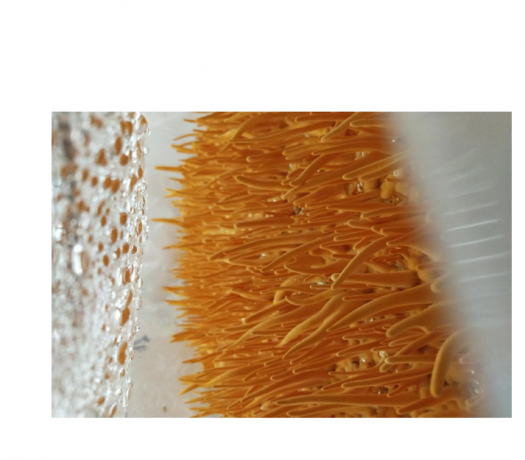please click here:
https://www.newnaturebio.com/mushrooms.html
Introduction to Cordyceps Militaris
Cordyceps Militaris is one of the most fascinating medicinal fungi in the world. Known for its bright orange fruiting bodies, this mushroom has been used in traditional medicine for centuries to support vitality, stamina, and overall wellness. Unlike its rare cousin Cordyceps Sinensis, which grows naturally in the high-altitude Himalayan regions, Cordyceps Militaris can be cultivated successfully in controlled environments, making it widely available for research and supplementation.
As interest in natural remedies and functional foods grows globally, Cordyceps Militaris is gaining recognition not only in traditional herbalism but also in modern nutritional science. From boosting energy and immune defense to improving endurance and balancing metabolism, this fungus continues to attract both researchers and consumers alike.
The Unique Biology of Cordyceps Militaris
Cordyceps Militaris belongs to the Ascomycota phylum of fungi. It is classified as an entomopathogenic fungus, meaning it naturally grows on insects, although cultivated varieties grow on plant-based substrates like rice, soybeans, or silkworm pupae. Its fruiting bodies are thin, elongated, and bright orange, giving them a visually striking appearance.
What makes Cordyceps Militaris stand out biologically is its ability to produce bioactive compounds, including cordycepin, polysaccharides, adenosine, and sterols. Among these, cordycepin (3'-deoxyadenosine) is particularly notable for its potential antiviral, anti-inflammatory, and anti-tumor properties.
Cordyceps Militaris vs Cordyceps Sinensis
Cordyceps Sinensis, also known as Ophiocordyceps Sinensis, is often called the “caterpillar fungus.” It has been prized in Tibetan and Chinese medicine for centuries but is extremely rare and expensive due to overharvesting and limited natural habitats. Cordyceps Militaris offers a sustainable and affordable alternative while providing many of the same bioactive compounds.
| Feature | Cordyceps Militaris | Cordyceps Sinensis |
|---|---|---|
| Cultivation | Can be cultivated in laboratories and farms | Primarily wild-harvested, difficult to cultivate |
| Appearance | Bright orange fruiting bodies | Brownish, caterpillar-shaped |
| Price | Affordable, widely available | Extremely expensive, often adulterated |
| Bioactive Compounds | Cordycepin, polysaccharides, adenosine | Cordycepin (lower levels), polysaccharides |
| Sustainability | Highly sustainable through cultivation | Overharvested, endangered species |
This comparison shows why Cordyceps Militaris is increasingly preferred for supplementation and research.
Health Benefits of Cordyceps Militaris
Enhances Energy and Endurance
Cordyceps Militaris has traditionally been used to fight fatigue and improve physical stamina. Modern studies suggest that cordycepin may enhance the body's utilization of oxygen and ATP production, which supports energy metabolism during exercise. This makes it popular among athletes and fitness enthusiasts.
Supports Immune Function
The polysaccharides present in Cordyceps Militaris act as immunomodulators, helping regulate immune responses. They may strengthen the body's defense against pathogens while reducing excessive inflammation.
Anti-Aging Potential
Oxidative stress is a major contributor to aging and chronic diseases. Cordyceps Militaris contains antioxidants that combat free radicals, potentially slowing cellular aging and supporting longevity.
Metabolic Balance
Cordyceps Militaris may help regulate blood sugar levels and support healthy cholesterol metabolism. These properties make it of interest for individuals managing conditions such as diabetes or metabolic syndrome.
Anti-Inflammatory and Antiviral Effects
Cordycepin has shown promise in reducing inflammatory pathways and inhibiting viral replication in laboratory studies. This suggests potential for supporting recovery from infections and reducing chronic inflammation.
Culinary Uses of Cordyceps Militaris
While Cordyceps Militaris is often taken as a supplement in capsule or powder form, it can also be used in cooking. In many Asian cuisines, it is added to soups, teas, and stews for both flavor and health benefits. Its mild, earthy taste makes it versatile in both traditional herbal recipes and modern health-focused dishes.
How to Use Cordyceps Militaris
Supplements
Capsules and powders are the most common forms. Standardized extracts provide consistent levels of cordycepin and polysaccharides.
Teas and Tonics
Dried Cordyceps Militaris can be steeped in hot water or simmered in soups, making it easy to incorporate into daily routines.
Culinary Recipes
Adding the mushroom to broths, rice dishes, or herbal teas not only enriches flavor but also delivers wellness benefits in a natural way.
Safety and Precautions
Cordyceps Militaris is generally considered safe for most people when consumed in moderate amounts. However, individuals with autoimmune conditions, those taking blood-thinning medications, or pregnant women should consult a healthcare professional before use.
Possible mild side effects may include digestive upset or dry mouth, though these are rare.
Cordyceps Militaris in Modern Research
Recent studies continue to explore the therapeutic potential of this mushroom. Research areas include:
-
Antioxidant and anti-aging effects at the cellular level
-
Potential in cancer treatment through apoptosis induction
-
Role in regulating blood glucose and lipid metabolism
-
Neurological protection against oxidative damage
Though promising, much of the research is still preclinical, and more human trials are needed to confirm long-term benefits.
Cordyceps Militaris vs Other Medicinal Mushrooms
Cordyceps Militaris shares some overlapping benefits with mushrooms like Reishi, Lion's Mane, and Shiitake, but it has unique strengths due to cordycepin.
| Mushroom | Primary Benefit | Unique Compounds |
|---|---|---|
| Cordyceps Militaris | Energy, endurance, immune balance | Cordycepin, adenosine |
| Reishi | Stress reduction, immune modulation | Triterpenes, ganoderic acids |
| Lion's Mane | Cognitive health, nerve regeneration | Hericenones, erinacines |
| Shiitake | Cardiovascular support, immunity | Lentinan, eritadenine |
This shows how Cordyceps Militaris fits into the broader spectrum of functional fungi, offering energy and vitality benefits not as prominent in other mushrooms.
Future Outlook for Cordyceps Militaris
As consumer demand for natural health products continues to grow, Cordyceps Militaris is likely to play an even larger role in the functional food and supplement industries. Advances in cultivation methods ensure high potency, sustainability, and accessibility, positioning it as a key player in modern wellness trends.
Frequently Asked Questions
1. Is Cordyceps Militaris better than Cordyceps Sinensis?
Cordyceps Militaris is more sustainable and affordable while still delivering similar health benefits. Though Sinensis has historical prestige, Militaris is more practical for modern use.
2. Can athletes benefit from Cordyceps Militaris?
Yes, many athletes use it to improve oxygen utilization, stamina, and post-exercise recovery.
3. How should I take Cordyceps Militaris daily?
You can consume it as capsules, powders, teas, or in soups. Standardized extracts provide consistent results.
4. Are there any side effects?
It is generally safe, but some individuals may experience mild digestive upset. People with specific medical conditions should consult a doctor before use.
5. Can Cordyceps Militaris support blood sugar balance?
Preliminary studies suggest it may help regulate glucose metabolism, making it potentially useful for those managing blood sugar issues.
Article Summary
Cordyceps Militaris, a vibrant orange medicinal mushroom, is celebrated for its ability to boost energy, immunity, and longevity. Unlike rare Cordyceps Sinensis, it is sustainable and affordable, rich in cordycepin and polysaccharides. From supplements to teas, its uses are diverse, and modern research continues to uncover promising health applications.
Would you like me to make this article slightly more SEO-focused (with keyword placement density optimization for “Cordyceps Militaris” throughout headings and body), or keep it natural and reader-friendly as it is now?






